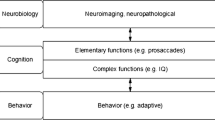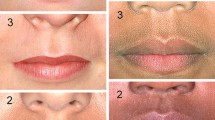Abstract
A dermatoglyphic index derived from monozygotic (MZ) twins of known placental type was used to estimate placentation retrospectively in a sample of adult male MZ twins. Examination of behavioral test scores with respect to placentation showed that the within-pair difference of most measures of type A behavior was smaller in presumed monochorionic than presumed dichorionic pairs. Measures of cognitive function and hostility were not related to placental type. Intraclass correlations in the monochorionic subgroup of MZ twins were greater than the correlations reported for the full sample of MZ twins. The trends were strongest for the Adjective Check List scales taken at two different exams 5 years apart and, to a lesser extent, for the Framingham type A scale. Our results are most consistent with greater intrauterine environmental covariance in monochorionic MZ twins as an explanation for inflation of the MZ twin correlation relative to dizygotic (DZ) correlation reported for some type A measures.
Similar content being viewed by others
References
Bendel, R. B., and Afifi, A. A. (1977). Comparison of stopping rules in forward “stepwise” regression.J. Am. Stat. Assoc. 72:46–53.
Byrne, D. G., Rosenman, R. H., Schiller, E. and Chesney, M. A. (1985). Consistency and variation among instruments purporting to measure type A behavior pattern.Psychosom. Med. 47:242–261.
Bulmer, M. G. (1970).The Biology of Twinning, Oxford, London.
Carmelli, D., Rosenman, R., Chesney M., Fabsitz, R., Lee, M., and Borhani, N. E. (1988). Genetic heritability and shared environmental influences of type A measures in the NHLBI twin study.Am. J. Epidemiol. 127:1041–1052.
Carmelli, D., Swan, G. E., and Rosenman, R. H., (1990a). Self-ratings and perceptions of type A traits in adult twins.J. Soc. Behav. Person. 5:263–276.
Carmelli, D., Swan, G. E., and Rosenman, R. H. (1990b). The heritability of the Cook and Medley hostility scale revisited.J. Soc. Behav. Person. 5:107–116.
Cook, W., and Medley, D. (1954). Proposed hostility and pharisaic-virtue scales for the MMPI.J. Appl. Psych. 38:414–418.
Costa, P. T., Zonderman, A. B., McCrae, R. R., and Williams, R. B. (1986). Cynicism and paranoid alienation in the Cook and Medley HO scale.Psychosom. Med. 48:283–285.
Eaker, E. D. (1984). behavioral phenotypes. In Rao, D. C., Elston, R. C., Kuller, L. H., Feinleib, M., Carter, C., and Havlik, R. (eds.),Genetic Epidemiology of Coronary Heart Disease: Past, Present, and Future, Alan R. Liss, New York, pp. 481–500.
Eslinger, P. J., Damasio, A. R., Benton, A. L., and Van Allen M. (1985). Neuropsychologic detection of abnormal mental decline in older persons.JAMA 253:670–674.
Fabsitz, R., Kalousdian, D. S., Carmelli, D., Robinette, D., and Christian, J. C. (1988). Characteristics of participants and non-participants in the NHLBI twin study.Acta Genet. Med. Gemellol. 37:217–228.
Feinleib, M., Garrison, R. J., Fabsitz, R., Christian, J. C. Hrubec, Z., Borhani, N. O. Kannel, W. B., Rosenman, R., Schwartz, J. T., and Wagner, J. O. (1977). The NHLBI, twin study of cardiovascular disease, risk factors: Methodology and summary of results.Am. J. Epidemiol. 106:284–295.
Folstein, M. F., Folstein, S. E., and McHugh, P. R. (1975). A practical method for grading cognitive state of patients for the clinician.J. Psychiat. Res. 12:189–198.
Gurling, H. M. D., Grant, S., and Damgl, J. (1985). The genetic and cultural transmission of alcohol use, alcoholism, cigarette smoking and coffee drinking: A review and an example using a log linear cultural transmission model.Br. J. Addict. 80:269–279.
Haynes, S. G., Levine, S., Scotch, N., Feinleib, M., and Kannel, W. B. (1978). The relationship of psychosocial factors to coronary heart disease in the Framingham study: I. Methods and risk factors.Am. J. Epidemiol. 107:362–383.
Haynes, S. G., Feinleib, M., and Kannel, W. B. (1980). The relationship of psychosocial factors to coronary heart disease in the Framingham study. III. Eight-year incidence of coronary heart disease.Am. J. Epidemiol. 111:37–58.
Henderson, N. D. (1982). Human behavior genetics.Annu. Rev. Psychol. 33:403–440.
Herman, S., Blumenthal, J. A., Black, G. W., Chesney, M. A., and Rosenman, R. H. (1981). Self ratings of type A (coronary prone) adults: Do type A's know they are type A's?Psychosom. Med. 43:405–413.
Jenkins, C. D., Zyzanski, S. J., and Rosenman, R. H. (1979).Jenkins Activity Survey Manual, Psychological Corp., New York.
Jenkins, C. D. (1982). Psychological risk factors for coronary heart disease.Acta Med. Scand. (Suppl.)660:123–136.
Loehlin, J. C. (1986). Heredity, environment, and the Thurstone temperament schedule.Behav. Genet. 16:61–73.
Lykken, D. T. (1982). Research with twins: The concept of emergenesis.Psychophysiology 19:361–373.
Mathews, K. A., and Krantz, D. S. (1976). Resemblances of twins and their parents in pattern A behavior.Psychosom. Med. 38:140–144.
Moore, S. J., and Munger, B. L. (1989). The early ontogeny of the afferent nerves and papillary ridges in human digital glabrous skin.Dev. Brain Res. 48:119–141.
Mulvihill, J. J., and Smith, D. W. (1969). The genesis of dermatoglyphics.J. Pediat.,75:579–589.
Ragland, D. R., and Brand, R. J. (1988). Type A behavior and mortality from coronary heart disease.N. Engl. J. Med. 318:65–69.
Rahe, R. H., Hervig, L., and Rosenman, R. H. (1982). Heritability of type A behavior.Psychosom. Med. 40:478–486.
Reed, T., and Young, R. S. (1982). Maternal effects in dermatoglyphics: similarities from twin studies among palmar, plantar, and fingertip variables.Am. J. Hum. Genet. 34:349–352.
Reed, T., Uchida, I. A., Norton, J. A., Jr. and Christian, J. C. (1978). Comparisons of dermatoglyphic patterns in monochorionic and dichorionic monozygotic twins.Am. J. Hum. Genet. 30:383–391.
Reed, T., Evans, M. M., Norton, J. A. Jr. and Christian, J. C. (1979). Maternal effects on fingertip dermatoglyphics.Am. J. Hum. Genet. 31:315–323.
Review Panel on Coronary-Prone Behavior and Coronary Heart Disease (1981). Coronary-prone behavior and coronary heart disease: A critical review.Circulation 63:1199–1215.
Rosenman, R. H., Brand, R. J., Jenkins, C. D., Friedman, M., Straus, R., and Wurm, M. (1975). Coronary heart disease in the western collaborative group study: Final follow-up experience of 81/2 years.JAMA 233:872–877.
Snedecor, G. W., and Cochran, W. G. (1967).Statistical Methods, 6th ed., Iowa State University Press, Ames, p. 295.
Swan, G. E., Carmelli, D., Reed, T., Harshfield, G. A., Fabsitz, R. R., and Eslinger, P. J. (1990). Heritability of cognitive performance in aging twins: The NHLBI twin study.Arch. Neurol. 47:259–262.
Thurstone, L. L. (1949).Thurstone Temperament Schedule, Science Research Associates, New York.
Wechsler, D. (1981).Manual: Wechsler Adult Intelligence Scale-Revised, Psychological Corp., New York.
Williams, R. B., and Barefoot, J. C. (1988). Coronary prone behavior: The emerging role of the hostility complex. In: Houston, B. K. and Snyder C. R. (eds.),Type A Behavior Pattern: Research, Theory and Intervention, John Wiley, New York, pp. 189–211.
Author information
Authors and Affiliations
Rights and permissions
About this article
Cite this article
Reed, T., Carmelli, D. & Rosenman, R.H. Effects of placentation on selected type A behaviors in adult males in the national heart, lung, and blood institute (NHLBI) twin study. Behav Genet 21, 9–19 (1991). https://doi.org/10.1007/BF01067663
Accepted:
Issue Date:
DOI: https://doi.org/10.1007/BF01067663




